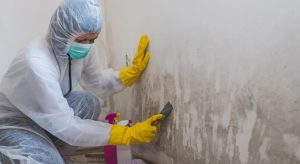You should do a few things immediately following water damage to your home. The first step is to identify the type of water damage. It would help if you also determined the extent of the damage. Once this is done, it is time to contact a professional water damage remediation service. Listed below are the first steps in the water damage remediation process according to pros:
Identifying the type of water damage
The process of water remediation begins with identifying the type of water damage. Some water damage is more harmful than others; if you are unsure, contact a professional water damage remediation service. Water damage remediation can help you avoid future disasters by protecting your home and belongings adequately. Here are the steps in the process. Again, if you are unsure what type of water damage you have, contact a professional for help.
Once you’ve identified the type of water damage, you’ll need to know the level of restoration necessary to complete the job. Mold remediation can be expensive and requires the removal of affected surfaces and materials. In addition, air scrubbers and drying equipment are recommended to prevent mold growth. Mold remediation is likely the most expensive aspect of the water damage restoration process. Still, it’s vital to keep mold from spreading because it can cause significant damage to your home.
Assessing the extent of the damage
One of the first steps in determining the extent of water damage is identifying the source of the moisture. While water staining or pooling can be a visual cue that there is a problem, many materials aren’t visible until they are saturated enough to support mold growth. This is where a professional crew can help you out. Whether the source of the moisture is local or catastrophic, pros can classify the damage using the following categories:
A water damage mitigation company can help occupants mitigate the problem by removing excess water and mold. In addition, they can remove wet materials and debris, limit water sources, and reassemble the space to prevent future water damage. A professional engineer can also help with the immediate removal process. In addition to assessing the extent of water damage, a water damage remediation company may use a portable wet/dry vacuum or truck-mounted equipment to extract remaining moisture. These tools can be placed on floors, walls, and ceilings to determine the humidity level.
Cleaning up the area
There are three significant steps in water damage remediation: extracting water from the affected area, drying the site, and sanitizing it. Water mitigation is crucial to prevent future disasters and protect the home from further damage. Water mitigation involves removing both black and gray water. The mildest type of water damage is clean water that originates from local leaks.
Professionals also categorize the types of water damage and their levels. Black water poses the most significant health risk and requires mold remediation services. Water damage remediation can take many forms, including drying out the affected area and using air scrubbers to combat the growth of mold. Inspecting the site to ensure there is no overlooked mold and other types of debris is essential.
Drying the area
Drying the area after flooding involves removing any wall hangings or furniture. To speed up the drying process, use a towel to blot away any excess water and turn on fans to circulate the air. Ensure you turn off electrical outlets before plugging fans into the wall, as they can cause bodily harm. You should also purchase a wet/dry vacuum, which can be a great help in the early stages of flood cleanup.
Professionals use heavy-duty air movers to dry the area quickly. They can reach even challenging to-reach areas and draw excess water from partially-soaked structures. The drying process is vital to preventing mold growth and creating an air hazard. Water damage repair technicians use moisture meters to ensure areas are dry. DIY methods may result in warped surfaces and mold.
Cleaning up mold growth
According to pros, there are several basic steps to cleaning up mold growth in the water damage remediation process. Some areas require professional attention, while homeowners can clean others up. It is a good idea to wear protective gear, including N-95 masks, gloves, and goggles, and avoid using chemicals like chlorine bleach. A professional should be consulted to determine the best mold mitigation measures.
The water damage remediation process includes:
- Cleaning up the mold growth
- Addressing the water source.
- Dehumidifying the home to prevent further development
This process is not covered by homeowners’ insurance, but it might be covered if the water damage was gradual and the homeowner had time to catch it before it became an issue. In such cases, you must contact your insurance company for further assistance.
Cost of water damage remediation
The first step in water damage cleanup is removing the water. If you can stop the source before it spreads, you can limit structural damage. Water extraction services vary in price depending on the type of water involved. If the water is clean, the cost of restoration work is much cheaper than when it comes from dirty water. However, contaminated water that contains human waste or sewage is considered “black water.” Therefore, the cost of water damage remediation is higher for black water.
In the U.S., the average cost of water damage remediation is $2,400. For a primary job, which involves removing water and drying out the damaged area, the price may be between $3,750 and $5,250. The amount of water involved, type of water, and location all play a role in the total cost. Additionally, labor costs are a determining factor in the final price.



